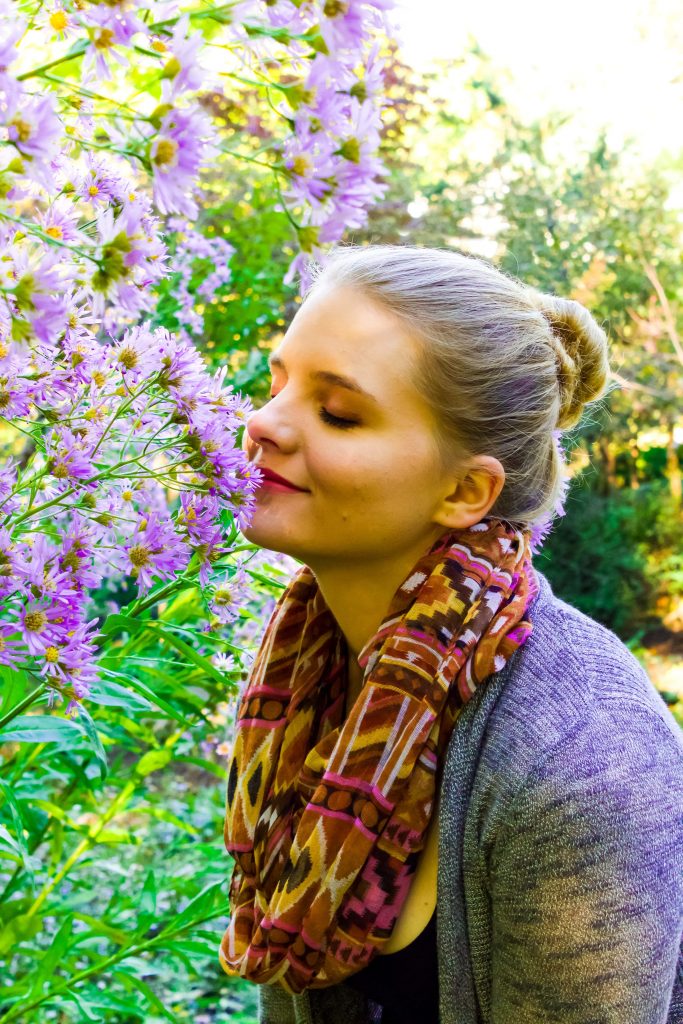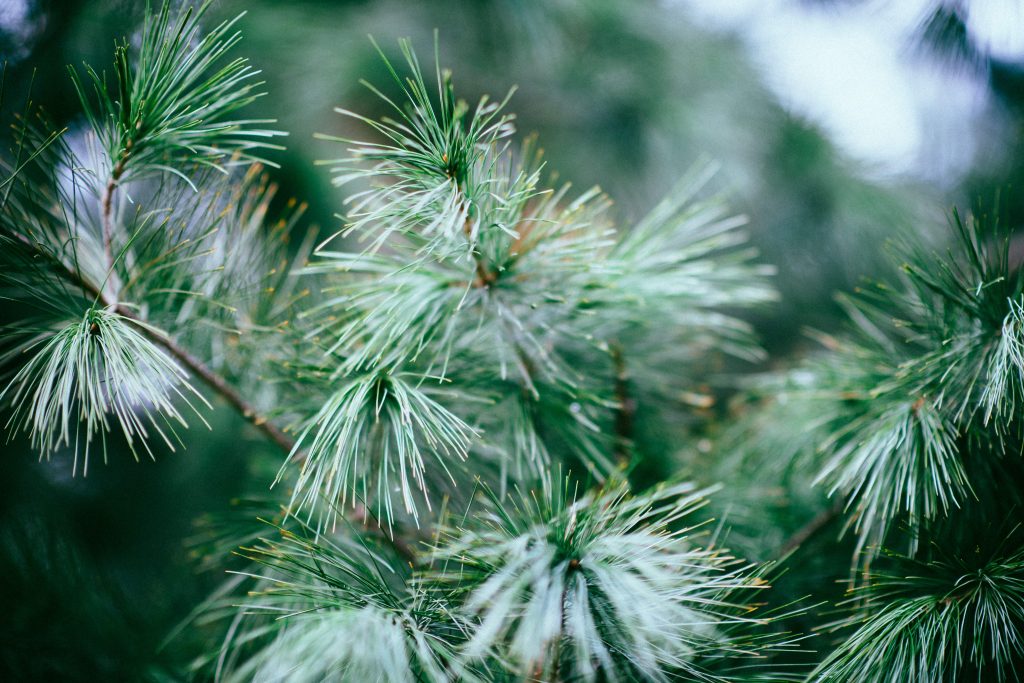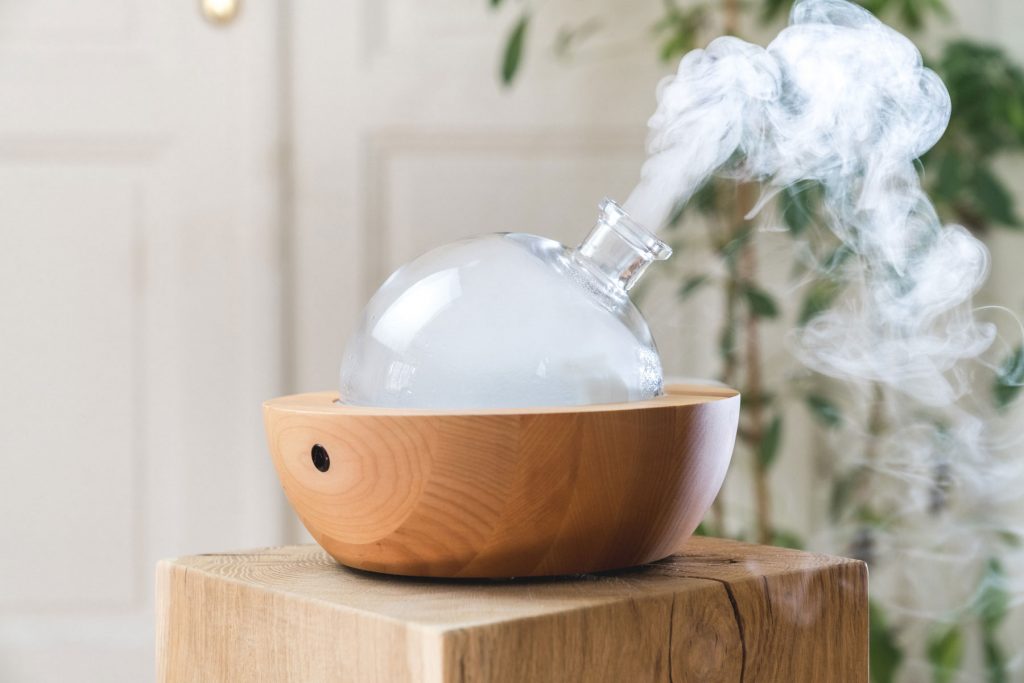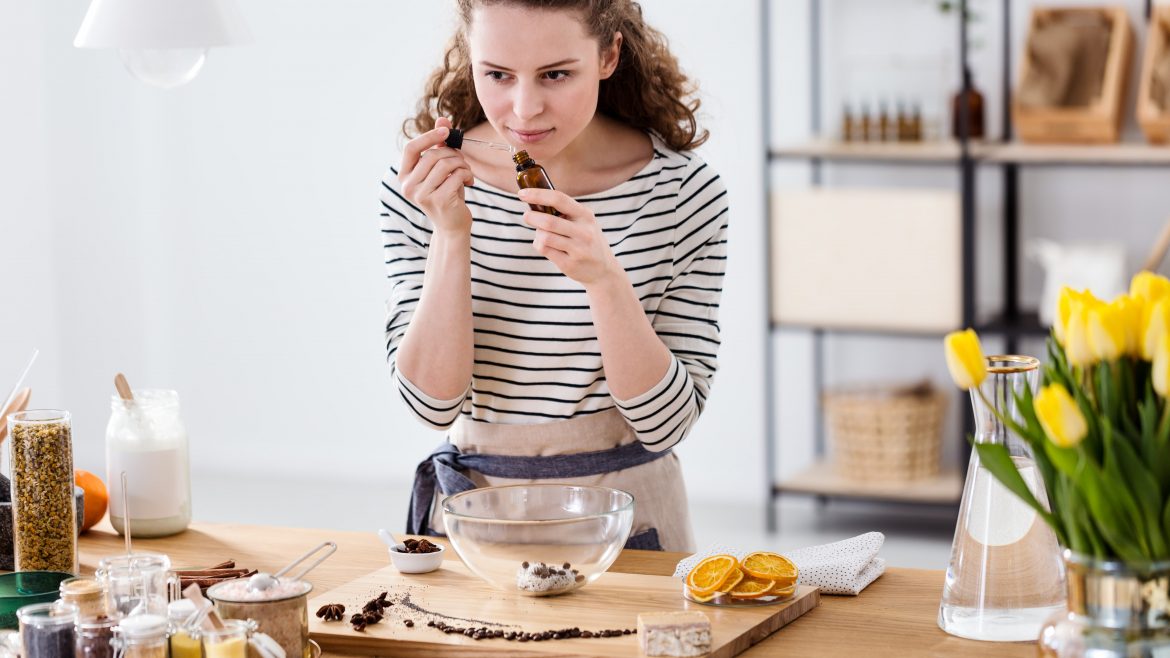How to Use Essential Oils: Benefits of Aromatherapy Using Inhalation
Therapeutic Inhalation of Essential Oils: How to Do it Properly
Why inhale essential oils?

When we breathe in aromatic molecules they travel to the back of our nose and stimulate special cells called olfactory receptor neurons. Once triggered, these highly sensitive cells relay messages to the brain via the limbic system, which is the control center for our emotions, blood pressure, breathing, memory and hormone production.
In fact, this is the fundamental basis for using inhalation therapeutically.
This method can benefit a number of health conditions including bronchial infection, sinus congestion, sore throats, colds and coughs. Here are some popular ways to enjoy the benefits of essential oils through inhalation:
Tissue/Handkerchief – place a few drops of oil on a tissue, handkerchief or pocket square and inhale deeply for several minutes. You can also carry it around with you and repeat throughout the day as needed for relief of cough or congestion.
Pillow – use at bedtime for relaxation, anxiety or symptoms or cold and flu. This aromatherapy method disperses the aromatic molecules over several hours. Place a few drops directly on the pillow or cotton pad and place it nearby while you sleep.
Aromatherapy Inhaler/Stick – you can purchase these small, portable plastic personal inhalers at a pharmacy or some health food stores. Add a few drops of your chosen essential oil into the device and use throughout the day as needed.
Steam Inhalation – this is by far the most popular and relaxing method of inhaling essential oils to help ease cough, congestion, allergies and more. Pour a small amount of hot water into a bowl and add 2-3 drops of essential oil. Quickly place a towel over your head and inhale for 1-2 minutes. Make sure to close your eyes to avoid irritation, and do not keep your face too close to the heated water to prevent burning.
Diffusion in the Home: Create a Healing Ambiance
If you’ve ever hiked through a forest or walked into an herbal shop, you’re familiar with the subtle and beautiful aroma of natural plant essences. Who doesn’t like the smell of pine, am I right?

Pure essential oils have become very popular to use in the home, either to create a soothing ambiance or to mask unpleasant odours. However, diffusing essential oils in your house can do so much more than make your environment smell nice.
Especially if you tend to spend most of your time inside, essential oils can support your indoor space while improving your health and well-being both physically and emotionally.
For example, anti-microbial Eucalyptus (Eucalyptus globulus) is well-known for killing airborne pathogens like bacteria and viruses while purifying the air. It is also effective for relieving bronchial congestion and is therefore useful for diffusing during cold and flu season.
Chamomile (Chamaemelum nobile), Lavender (Lavandula angustifolia) and Neroli (Citrus aurantium) are beneficial if you’re afflicted with hay fever or seasonal allergies as they’ve been shown to soothe inflamed and irritated nasal passage ways.
If you’re feeling down, anxious or stressed then Geranium (Pelargonium graveolens), Rose (Rosa damascene), Ylang Ylang (Cananga odorata) and Bergamot (Citrus bergamia) can help stabilize the mood, uplift emotions and ease anxious feelings.

[Note: Keep in mind that using essential oils for psychological purposes (e.g. easing tension and anxiety, relaxing, etc.) is highly subjective. For example, you may find Bergamot extremely enjoyable and calming, while someone else may find it annoying or unpleasant. For this reason, choosing the right essential oil can involve some trial-and-error. I also suggest talking to an experienced aromatherapist if you’re new to using essential oils.]
Once you have acquired your essential oils, you’ll need to decide how you’re going to diffuse them. The preferred method is using ultrasonic waves or cool air to disperse aromatic molecules without using heat or friction. Common tealight diffusers are inexpensive and popular, although these are more for creating a pleasant scent environment rather than for therapeutic purposes.
If you’re looking for recommendations (for essential oils and/or their uses), feel free to browse our website.

